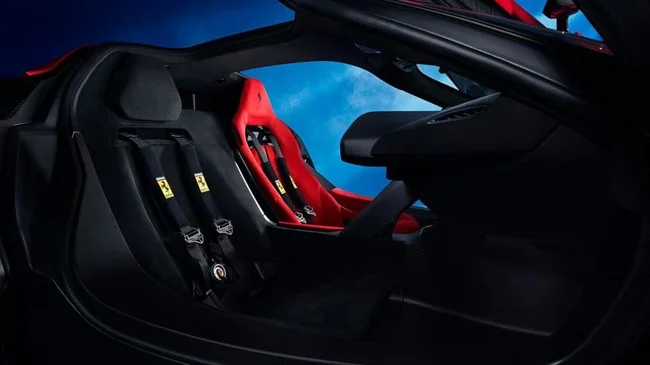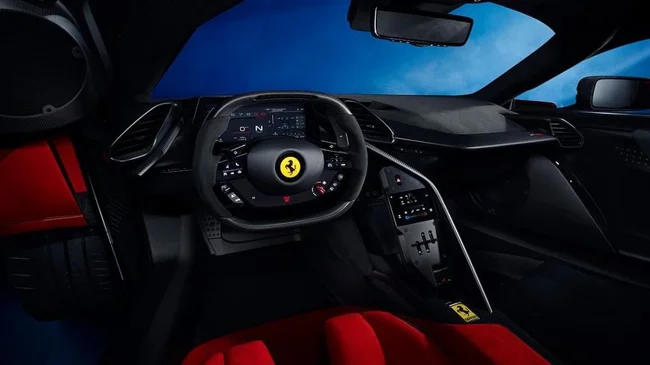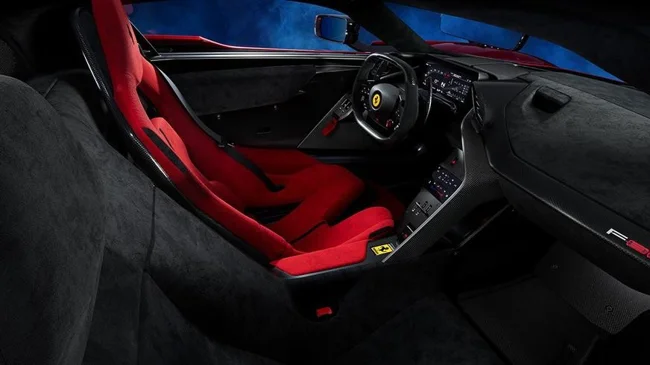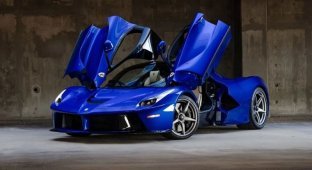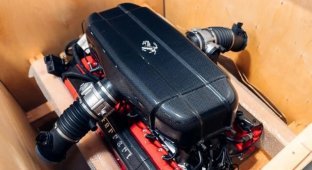Ferrari presented its most expensive and most powerful hypercar F80 (8 photos + 1 video)
The successor to LaFerrari has become the most powerful, complex and expensive model from Maranello. The Ferrari F80 with a 1,200-horsepower hybrid installation is positioned as a new milestone in the art of developing road hypercars and is noticeably different from previous models, including LaFerrari, which also had a petrol-electric nature. In total, they plan to assemble 799 hypercars. 
Describing the new product, the company repeatedly emphasizes its direct connection with high-level motorsports - Formula 1 and the endurance racing championship, including the 24 Hours of Le Mans. In particular, the concept of the power plant, based on the phenomenal petrol V6, was borrowed from track cars.
On this engine, Ferrari used turbochargers with electric drives for the first time, redesigned the injection and exhaust manifold, reinforced all internal components with titanium and high-strength steels, and so on. As a result, the 3-liter V6 develops 900 hp and 850 Nm - the company set an internal record for specific power. At the same time, despite all the advantages, the engine weighs no more than a V6 of the same volume on the 296 GTB.
The internal combustion engine works with three electric motors. One of them, together with the V6, is located near the rear axle, the other two, mounted in a single block with gearboxes and inverters, rotate the front wheels. Thus, the F80 became the first all-wheel drive flagship of Ferrari. The total power is a historic 1,200 horsepower for the brand.
The power plant also includes a small 2.3 kWh high-voltage battery, which cannot be recharged from an external source. Ferrari specifically emphasizes that the new flagship cannot drive on electric traction, since this does not match the image of the model, but the reverse is still implemented due to the front motors.
The Ferrari F80 is based on a carbon fiber monocoque with aluminum subframes for the suspension and battery. The suspension is made according to a double-wishbone design with active shock absorbers installed horizontally, while the F80 does not have anti-roll bars. Especially for the flagship, Brembo developed especially durable brakes, and Michelin - an especially tenacious tire compound.
The dry weight of the F80 is 1,525 kg, which is almost 300 kg more than the LaFerrari, but the new model is still more dynamic. It will take 2.15 seconds to accelerate to 100 km/ h, and 200 km/ h in 5.75 seconds with a maximum speed of 350 km/ h. The braking distance from 100 km/ h will be only 28 meters.
It is stated that the design of the hypercar should recognize the features of classic Ferrari models, including the iconic F40, as well as Le Mans cars, but in this case the company focuses on innovations in active aerodynamics. For example, the rear wing with its own servo drives is able to adapt to current conditions in real time. At 250 km/h, the new elements can generate up to 1000 kg of downforce.
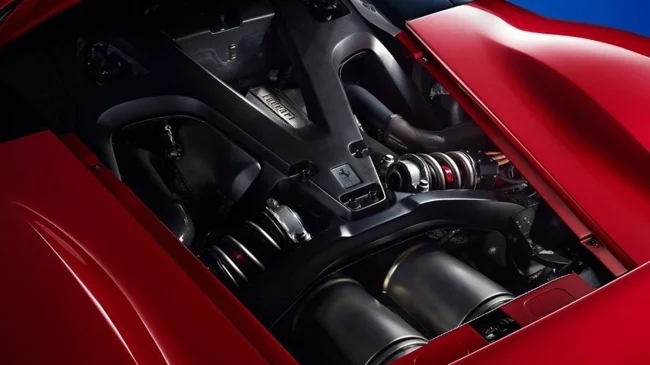


The interior is also very unusual for a flagship model. The company describes its layout as formula 1+: the emphasis here is on the driver's workspace, and the passenger space is made on a residual principle. For example, the pilot's seat is independent and has adjustments, and the passenger, in fact, will have to sit directly on the elements of the body's power structure. In addition, his place is slightly shifted back relative to the driver's and is camouflaged with the help of color solutions, while the pilot's work area, on the contrary, is actively emphasized. A very compact steering wheel was developed for the driver, and it is already known that in the future it will appear on new models.
The F80 circulation is planned to be strictly limited, but the company can meet those who do not have time to get their bearings, due to various special modifications. This has already happened, for example, with LaFerrari, which eventually acquired an open version of Aperta. Probably, in Maranello they are already actively forming a list of buyers, despite the unprecedented starting price of 3.6 million euros. Deliveries of commercial cars will begin at the end of 2025.

